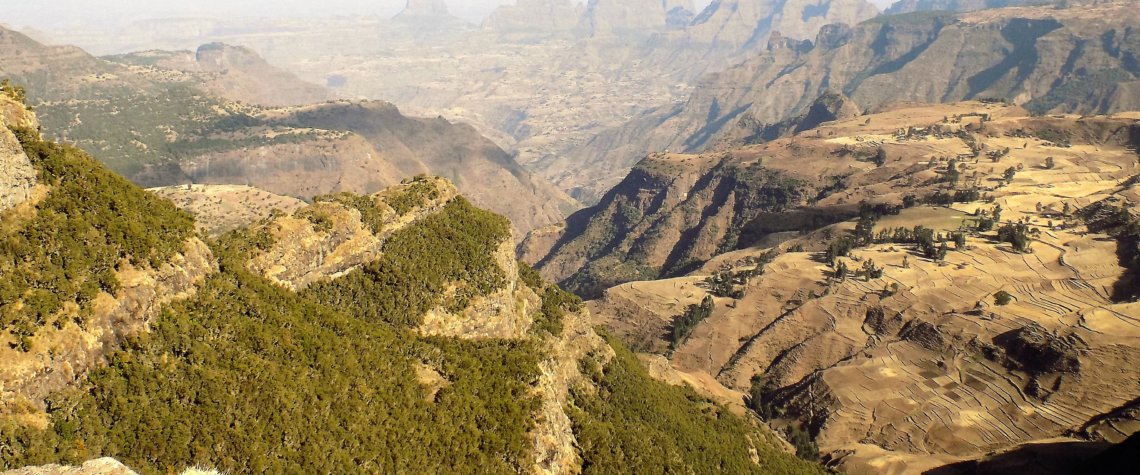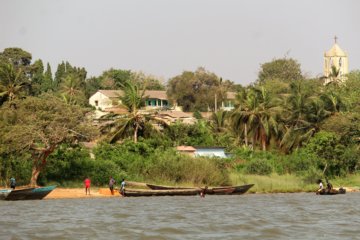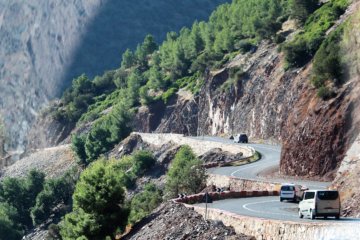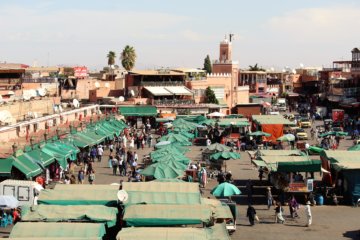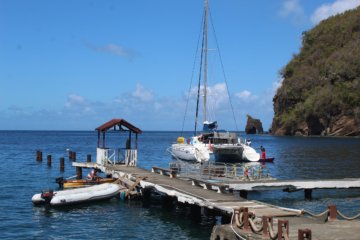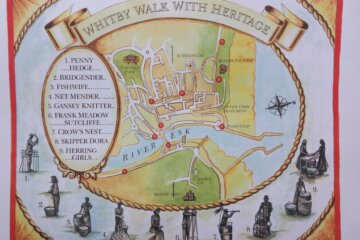The Simien Mountains in Ethiopia provide a wild, natural landscape with challenging hikes, fantastic bird- and animal-watching opportunities, and a chance to camp out under the stars.
In this article
Geography
The mountains are found in northern Ethiopia, north-east of Gondar in the Amhara region. They are part of the Ethiopian Highlands, a rugged mass of mountains sometimes called ‘the roof of Africa’ due to its height and large area. The mountains are a World Heritage Site and include the Simien Mountains National Park which was established in 1969.
The tallest peak in the Simien Mountains is Ras Dejen at 4550 metres. There are several other mountains over 4000 metres, all of them with sharp, jagged tops, making for a truly dramatic skyline.
Getting to the Simien Mountains
The jumping-off point for any visit to the Simien Mountains is the small town of Debark where the headquarters of the national park is located. Visitors usually spend a night or two here organising guides and permits and shopping for essential provisions before entering the park itself. It’s necessary to buy separate entrance tickets for each person and each vehicle, as well as permits for each night you are spending in the park, whether you are camping or staying in a lodge. It is also a legal requirement that all visitors are accompanied by a government-approved guide and government-appointed armed scouts.
There is only one unpaved road through the park which starts in Debark and ends in Mekhane Berhan, 10 kilometres beyond the opposite boundary. In reality, most tourists return to Debark after spending time in the park as there are better transport connections to reach other parts of Ethiopia.
Accommodation
Within the park, there are limited options for places to stay.
Simien Lodge
This hotel with 26 rooms and 2 family rooms located in traditional thatched roundhouses called tukels is the upmarket option for visitors to the Simien Mountains. All of the rooms have solar-powered hot water and underfloor heating. Situated at an elevation of 3260 metres, it is also home to the highest bar in Africa!
Expect to pay around $US220 per night for two people in a double or twin room including breakfast. You can check out the website here.
Camping
There are two campsites within the national park. Facilities are very basic with no running water and long-drop toilets. There may be opportunities, however, to upgrade to a bed in a shared shepherd’s hut.
Wildlife in the Simien Mountains
Whilst the wildlife is not usually the main reason visitors come to Ethiopia, animal and bird sightings are a definite bonus to any trip into the mountains.
Gelada Baboons
The Simien Mountains National Park is particularly noted for its troops of gelada baboons, mistakenly called enchilada baboons by one of our group, a misnomer which stuck throughout our trip! At our pre-trip briefing, Bini, our guide from Simien Experience, told us that there are five troops of gelada baboons in the part of the park we were going to visit. Each troop consists of around 350 baboons, made up of 20 – 25 families or bachelor groups. They sleep on the cliff faces to escape their predators (hyenas, jackals and leopards) and emerge onto flat ground in the day. They are creatures of habit – out and about between 7.30am and 6pm, roaming up to 5km, and returning to the same sleep site each night.
Walia Ibex
Also known as the Abyssinian Ibex, the Walia Ibex is an endangered species found only in the Simien Mountains. Despite conservationists’ best efforts, it’s thought that there are fewer than 500 animals remaining. This is mainly due to habitat loss (livestock grazing, encroaching human settlement, cultivation and road building) and hunting.
Ethiopian Wolf
The Ethiopian wolf (or Simien jackal), is native to the Ethiopian Highlands. Like the Walia Ibex, it is endangered. Best estimates are that there are as few as 80 left in the Simien Mountains and another 300 or so in the Bale Mountains further south. The wolf is similar in size and build to a coyote but it is distinguished by its long, narrow skull and its red and white fur.
Take a Tour
While it is perfectly possible to explore the Simien Mountains independently, you have to have an approved guide and scouts, so why not book a tour and let someone else take care of the logistics?
Whenever we visit a new place, we try to book tours with local guides. There’s no better way to get under the skin of a place! We use Viator when we want to uncover interesting things to do in a new city. They’re easy to use and book with, and we’ve had some amazing experiences with them.
Check out these tours:
Our Visit
Debark
We spent a night at the Simien Park Hotel in Debark before heading into the park. We took the opportunity to charge all of our electrical devices as we knew we would have no access to mains power for the next few days. We also shopped for groceries and, most importantly, beer! Mark and Nick, another member of our group, had to do some seriously hard bargaining to get the best price on several crates and they had to reassure the shopkeeper that they would return the empties! Before leaving the hotel, we made use of the kitchen to do some food prep. Mark and his cook group boiled 40 eggs for our first lunch!
Camping
Prior to the Simien Mountains, the last time I had slept under canvas was as a girl guide and I don’t like to think about how many years ago that was! I remember that it rained so hard during the night that our tent, which was pitched at the bottom of a hill, was in danger of being washed away. We ended up spending the rest of the night on the floor of the scout hut! This time, though, we were in Ethiopia in the dry season so there was no danger of history repeating itself. Despite this, the thought of sleeping on hard ground and having to use unsanitary drop toilets filled me with a sense of dread. It was certainly not a part of the trip I was looking forward to! In the event, however, I really enjoyed it. Yes, it was cold. Yes, it was uncomfortable. Yes, I was dirtier than I’d ever been in my life by the end of it. BUT, it was fun!!
Our truck
We were in Ethiopia on a Dragoman trip as I explained in an earlier post, and it was in the mountains that our truck, Christie, really came into her own. We had everything on board that we needed to survive a few days away from civilisation.
Our tents
The tents were stowed under a tarpaulin on Christie’s roof, so they had to be got down and each one had to be matched with its tent poles which were kept in a side locker. The tents had built-in groundsheets and were straightforward to put up and take down. We all made the mistake on the first night of not pegging down our fly sheets. As the temperature dropped and the wind got up, they offered us no protection and kept us awake with the noise they made banging on the sides of the tent. We made sure they were pegged down on all subsequent nights!
That first night under canvas was incredibly cold. We had been advised in our pre-trip information about possible sub-zero temperatures in the mountains, but concerns about having to carry heavy packs had outweighed common sense and we had left our all-weather sleeping bags and fleece jackets at home. Also, I have to admit to a certain scepticism at the warnings. I mean, when you think of Ethiopia, you think of sweltering heat, don’t you? Any such disbelief was banished, though, when we opened our tent flaps on that first morning to find a thick frost on the ground! This sent us all running to the National Park office, where we had no hesitation in paying exorbitant prices to hire warm blankets for the remainder of our stay!
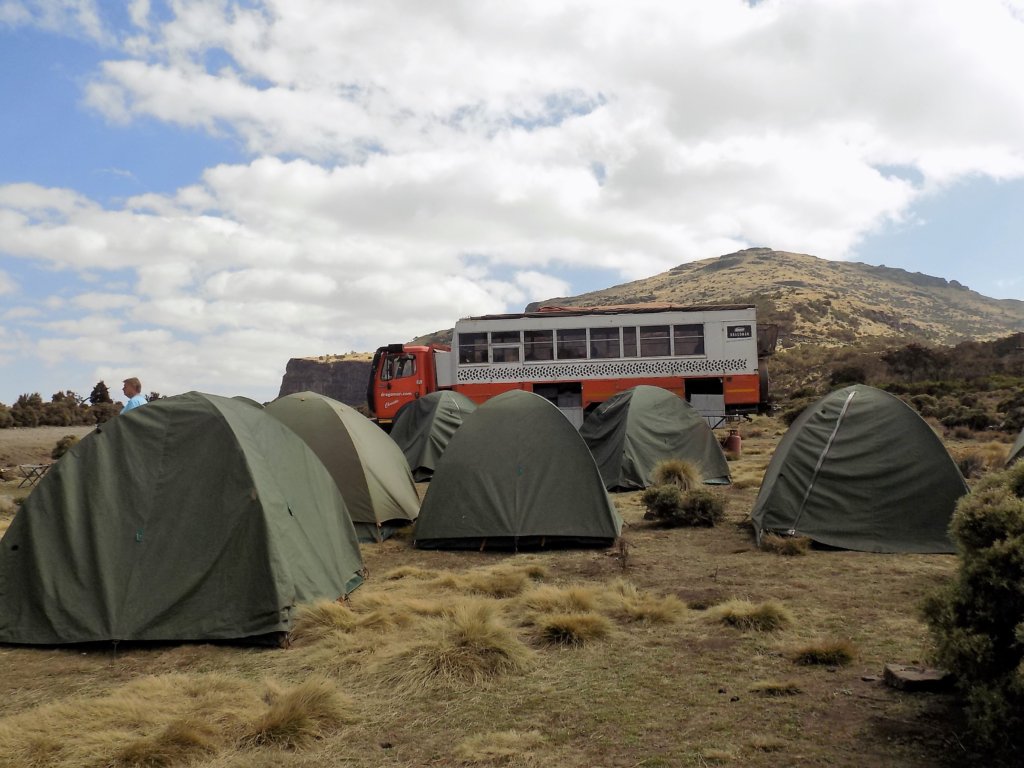
Food
When it came to feeding ourselves whilst we were camping, we followed tried and tested methods laid down by previous overlanding groups. We were split into ‘cook teams’ of three people, each team being responsible for producing breakfast, lunch and dinner for the entire group on a given day. Christie was well-equipped with cooking utensils, pans, and a selection of dried goods, including a variety of herbs and spices to add flavour to our culinary masterpieces, so we had just had to buy fresh ingredients, bearing in mind that it would be several days before some of us got to cook and refrigeration space was severely limited!
In camp, the cooking itself was done on two large gas burners which, at altitude (3760m), took an age to boil a kettle. This meant that, on the day they were on duty, the cook team had to get up an extra hour early just to make sure the coffee was ready!
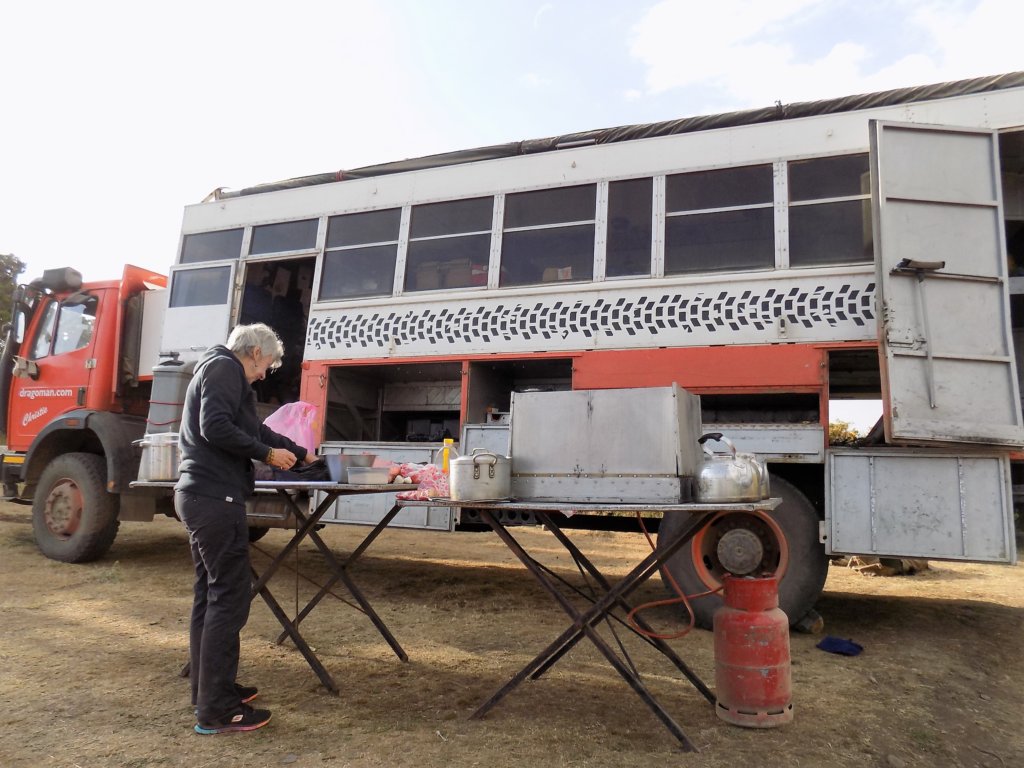
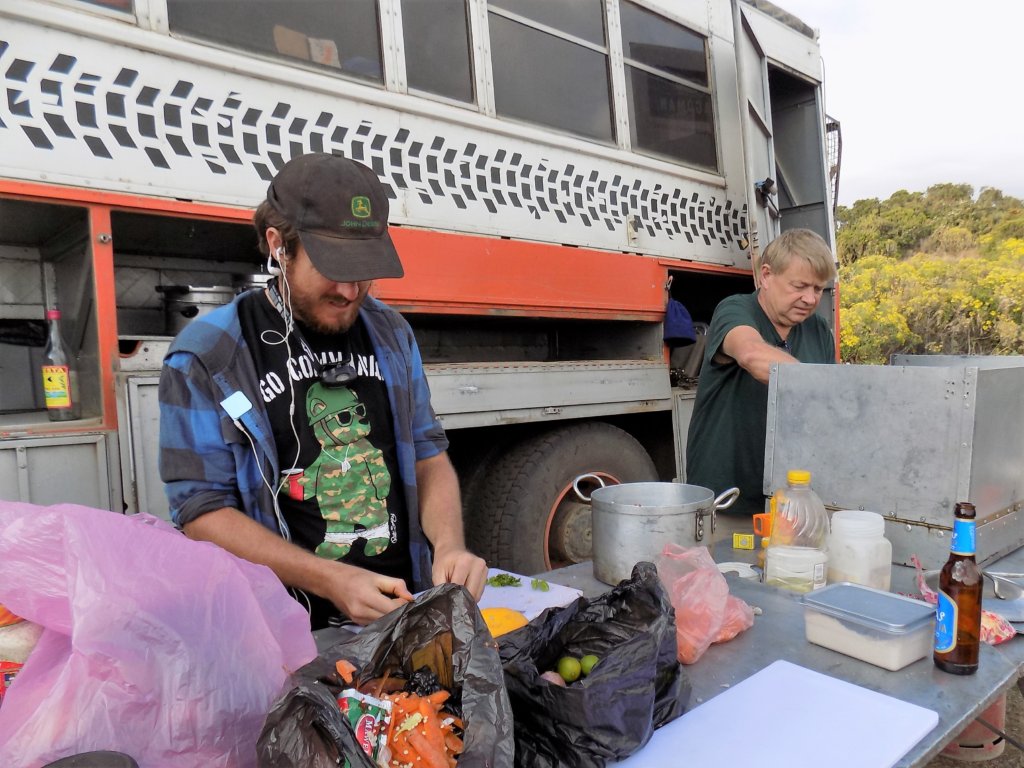
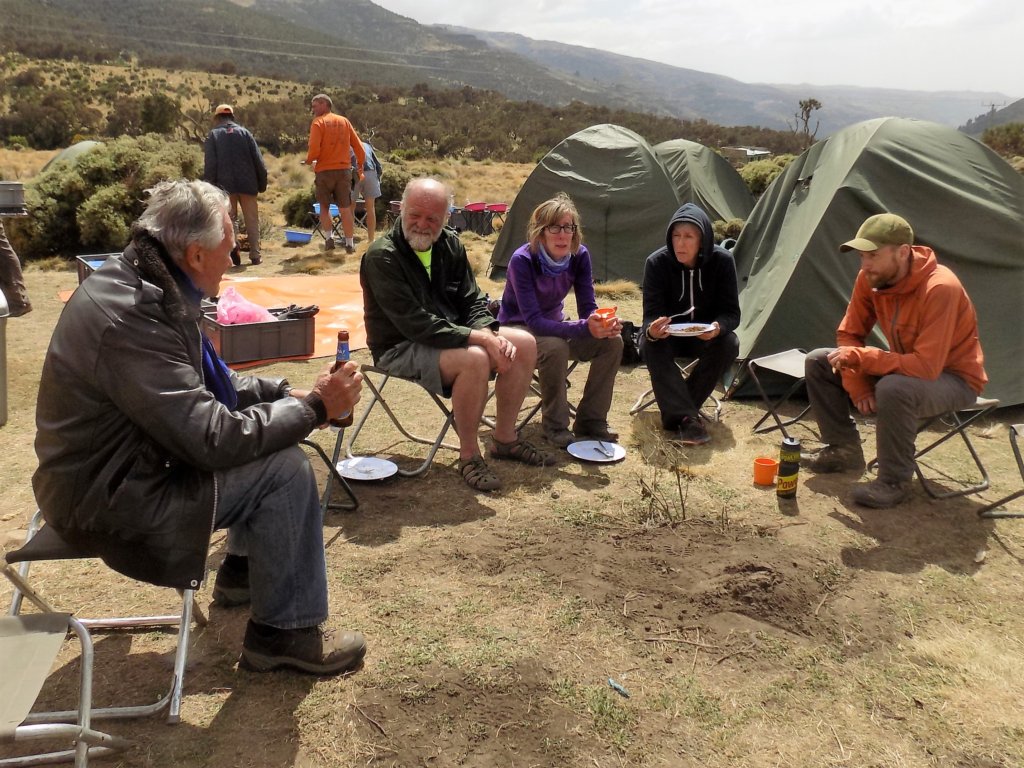
Ablutions
Camping in the Ethiopian mountains meant that we had no access to any kind of plumbed-in washing facilities and our only toilets were of the long drop ‘hole-in-the-ground’ variety. Despite these hardships, we soon got used to the ‘Wet Wipe Washes’ and the liberal use of hand sanitiser. Mark even managed to remain clean-shaven, using a disposable razor and half a cupful of water!
Our armed guards
It was certainly a novelty being shadowed by armed guards during our stay in the Simien Mountains! I’ve written a separate post about it here.
Evenings
In the evenings, we had lovely campfires which served not only to give us some welcome warmth, but which also encouraged us to share stories and, hence, bring us closer together as a group. With no light pollution, the night skies were amazing – millions of stars and dazzling meteor showers.
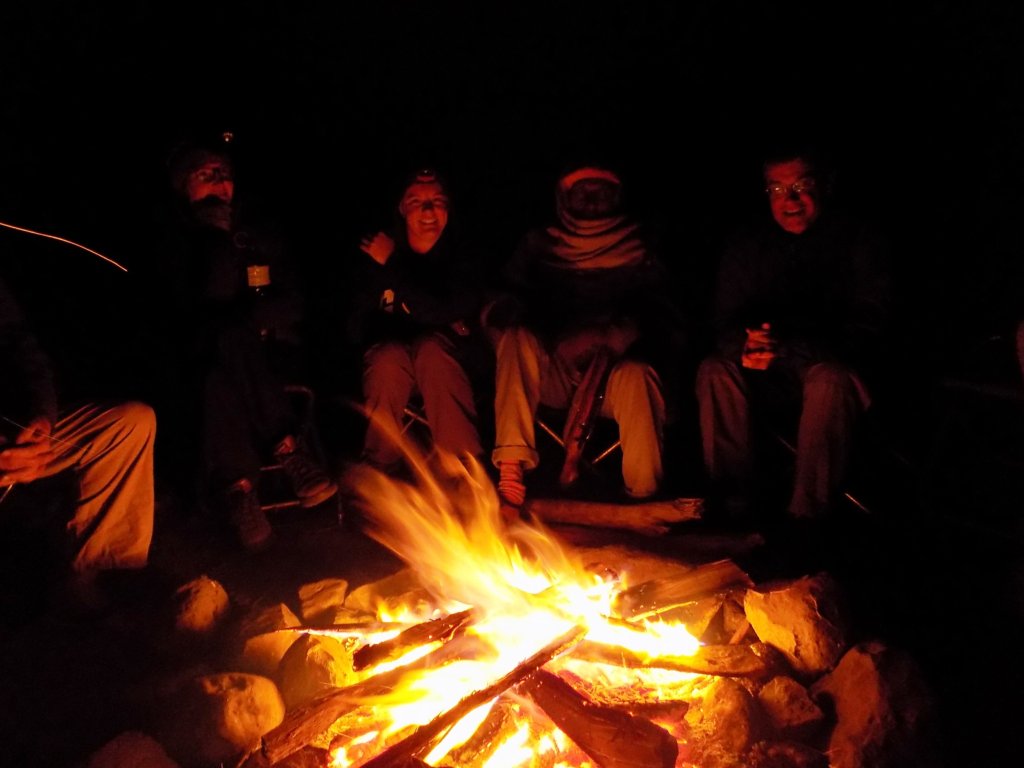
Hiking
We did a number of hikes during our time in the park. As you would expect, most of these involved trekking up steep inclines and scrambling back down again. The views were incredible, but, at these altitudes, the air was thin and some of the treks were beyond me! No matter, Mark went ahead with the camera and I stayed with Christie and other passengers enjoying the rarified atmosphere and the peace!
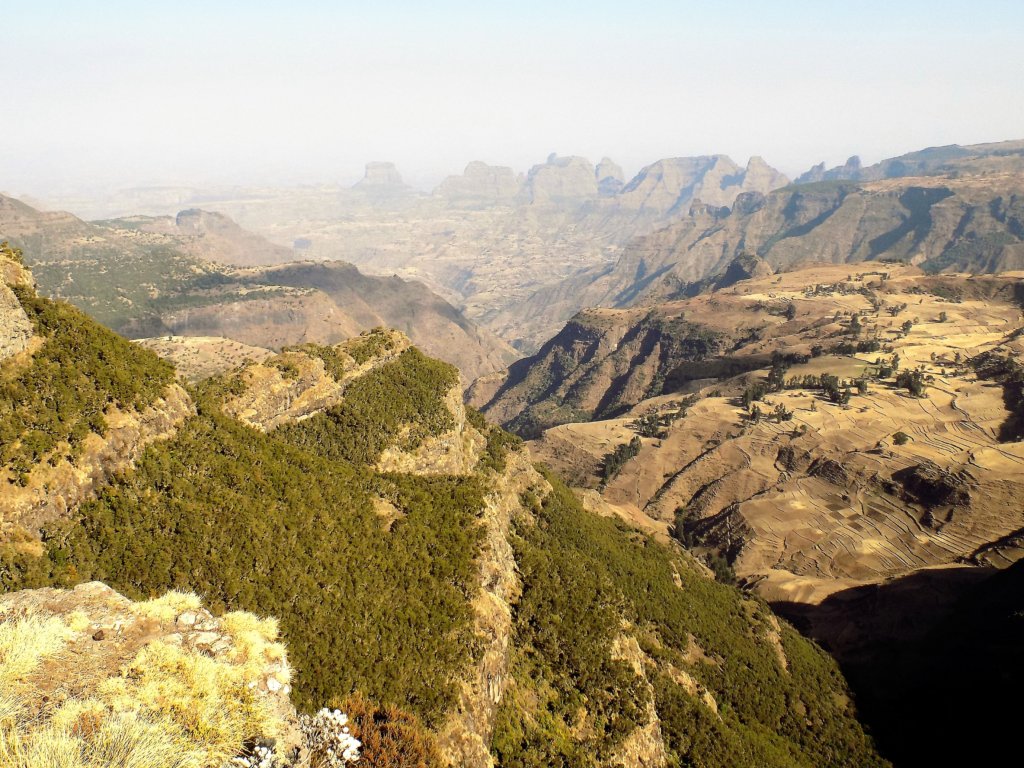
Watch this video about hiking in the Simien Mountains
Animals
Our first encounter with the fascinating gelada baboons came shortly after we entered the park. Alerted by a strange noise, which turned out to be the exhaust falling off our truck, the crew had stopped. While they were fixing it, we took the opportunity to take some photos of the stunning scenery. Suddenly, a huge troop of baboons came over the ridge and across the field in front of us. What a spectacle! They weren’t at all fazed by our presence and continued on their way as if we weren’t there. We had plenty of chances to photograph them as they paused to groom each other.
When we resumed our journey on our newly repaired truck, we came across a group of international scientists who were tracking the baboons as part of a 45-day project.
A couple of days later, a troop came through the middle of our camp. It was wonderful to be able to sit on the grass in the middle of them, just observing and taking photos.
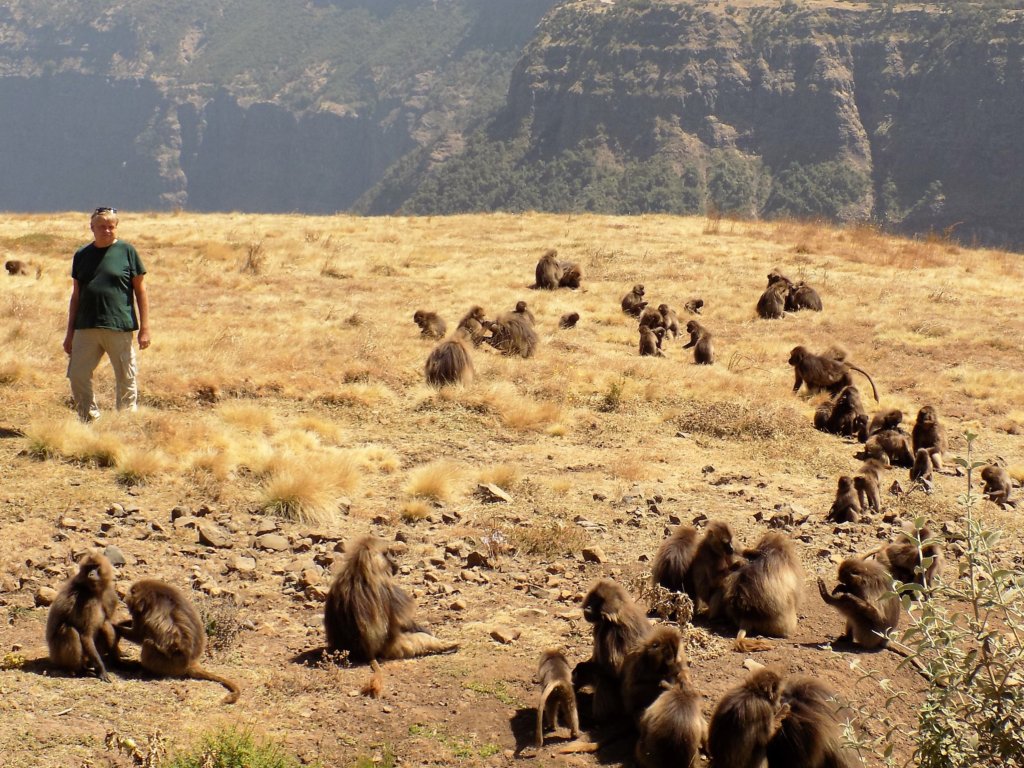
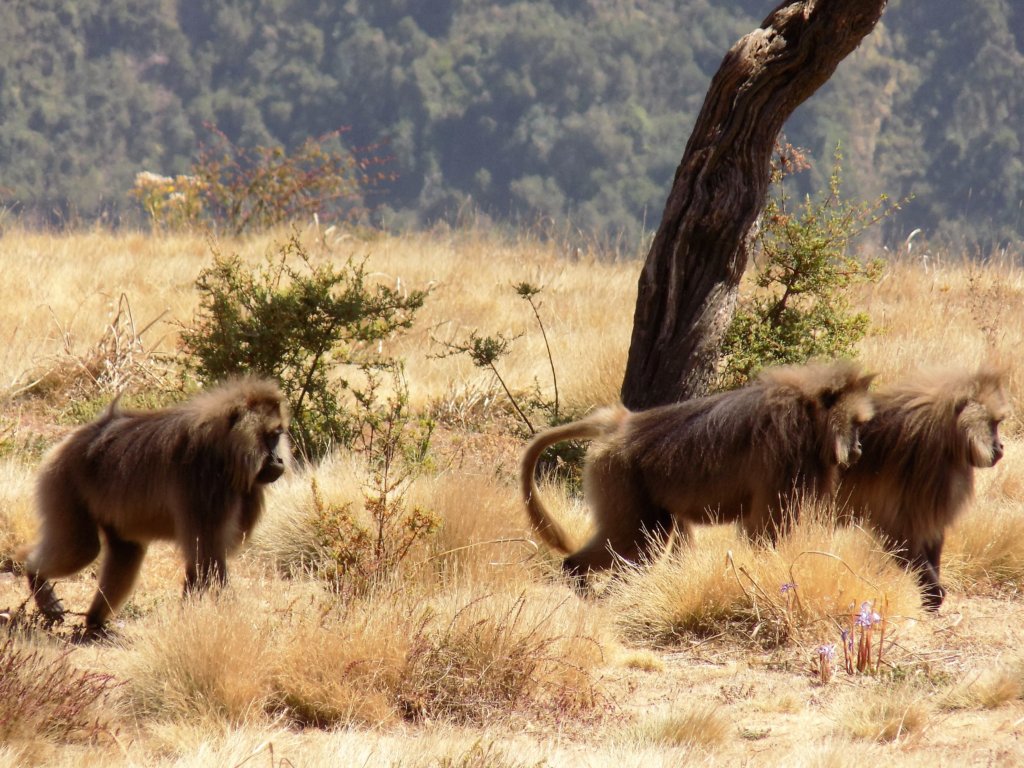
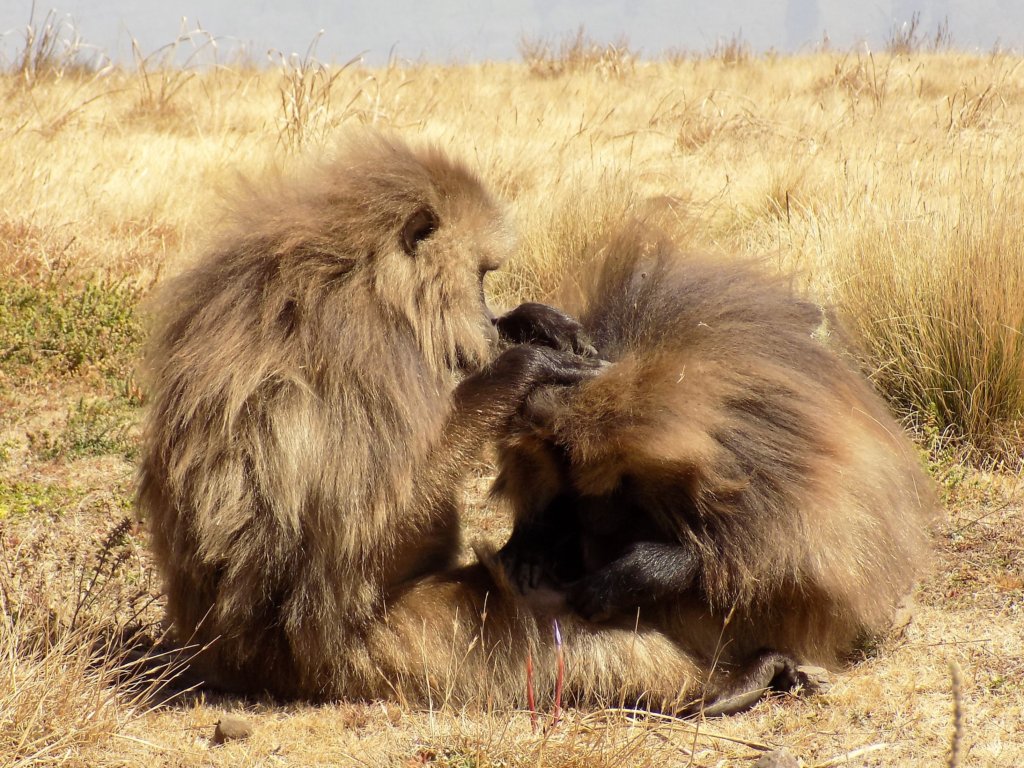
During our camping trip, we had fleeting encounters with other indigenous wildlife. One morning, we were lucky to see the rare Walia Ibex on a mountain top. It was at a distance and there was no time to get my monopole, so the resulting photos are very blurred – the one I’m using here is a stock image!

We also had a couple of sightings of Ethiopian wolves. We saw a pair of them briefly as we were driving one day. There was no time to take a photo, but we were struck by their beautiful reddish-brown coats. Later the same morning, we spotted another one and, this time, we did catch it on camera, albeit a back view! This photo is, therefore, another stock image, I’m afraid!
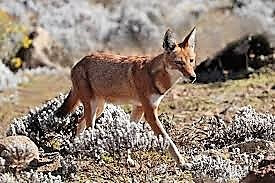
CLICK HERE TO READ MY COMPLETE TRAVEL GUIDE TO ETHIOPIA
Read More About Ethiopia and the Simien Mountains
If you like what you’ve read, PIN IT!!
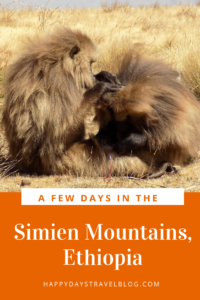
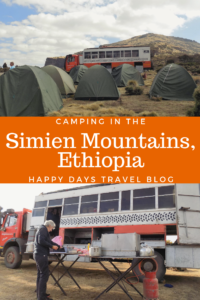
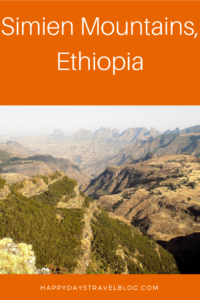
Disclosure: This post contains affiliate links. If you click through for more information, or to make a purchase, it may result in a small commission coming my way. Please note that there is no extra cost to you associated with this. Thank you so much for supporting my site.
Join our mailing list

Sign up to receive our monthly newsletter. Keep up with what we're doing and be the first to receive special offers and insider tips.

